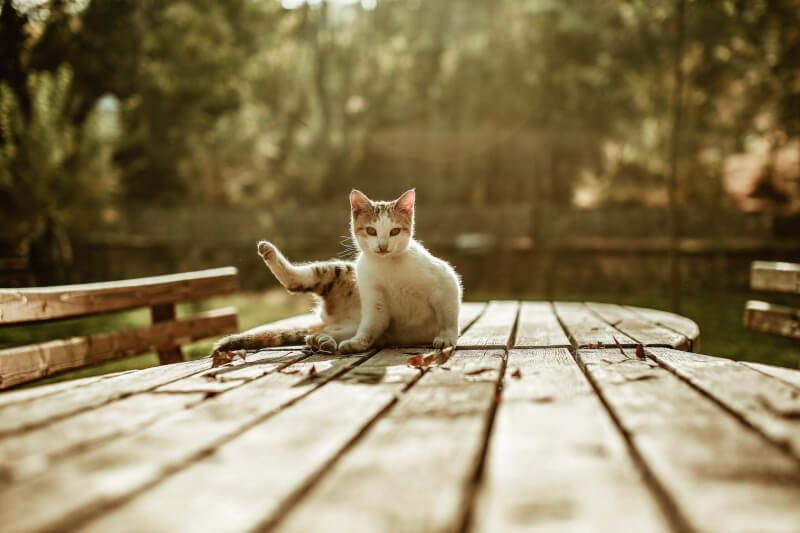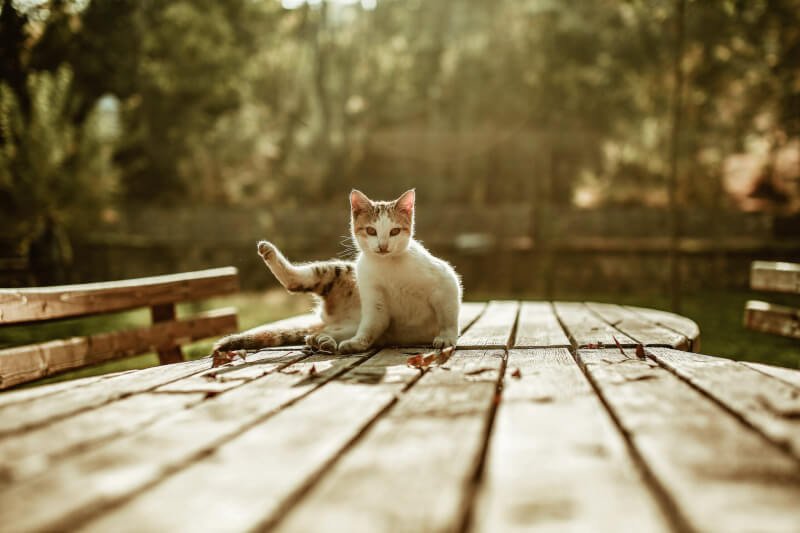Imagine creating the perfect home for your reptile companion in just one simple kit. The Reptile Habitat Kit is designed with your pet’s comfort and well-being in mind, providing everything they need to thrive in their new habitat. From a spacious enclosure to essential heating and lighting equipment, this kit has it all. Whether you’re a seasoned reptile enthusiast or a beginner looking to enter the world of reptile ownership, the Reptile Habitat Kit is the ultimate solution to ensure your scaly friend is happy and healthy.
Choosing the Right Reptile Habitat Kit
When it comes to creating the perfect home for your reptile friend, choosing the right habitat kit is essential. With so many options available, it can be overwhelming to know where to start. That’s why we’re here to guide you through the process and help you make an informed decision. In this article, we’ll discuss the key factors to consider when choosing a reptile habitat kit, outline the essential components it should include, recommend kits for different reptile species, provide step-by-step instructions for setting up your reptile habitat, offer tips for maintenance and care, highlight common mistakes to avoid, and provide some additional considerations to help you create the best possible environment for your scaly friend. Let’s dive in!
Consider the Type of Reptile
The first step in choosing the right reptile habitat kit is considering the type of reptile you have or plan to get. Different reptiles have different habitat requirements, and it’s crucial to provide them with an environment that meets their specific needs. Some reptiles prefer tropical climates with high humidity levels, while others thrive in desert-like conditions with low humidity. Semi-aquatic reptiles, on the other hand, need a habitat that includes both land and water areas. By understanding your reptile’s natural habitat, you can select a kit that closely replicates those conditions.
Assess the Size and Space Requirements
Another important consideration when choosing a reptile habitat kit is the size and space requirements of your reptile. Reptiles come in various sizes, and they need enough space to roam, climb, and explore within their enclosure. Take into account the anticipated adult size of your reptile to ensure you select a kit that provides adequate space for them to move comfortably. It’s always better to err on the side of caution and choose a slightly larger habitat than necessary, as this will allow your reptile to grow and thrive without feeling cramped or restricted.
Evaluate the Habitats in the Kit
Once you’ve narrowed down your options based on the type of reptile and space requirements, it’s time to evaluate the habitats included in the kit. A high-quality reptile habitat kit should include a suitable terrarium or enclosure that provides a safe and secure environment for your scaly friend. Look for habitats made of durable materials, with proper ventilation and secure locking mechanisms to prevent any escapes. Make sure the habitat is easy to clean and has removable sections or doors for convenient access during maintenance.
Check for Essential Accessories
In addition to the terrarium or enclosure, a good reptile habitat kit should also come with essential accessories that enhance your reptile’s living environment. These accessories include lighting and heating equipment to provide the necessary temperature and UVB rays for your reptile’s health, substrate and bedding materials for comfortable flooring, decorations and hides to create a stimulating and natural-looking habitat, water and humidity control systems to ensure proper hydration, food and feeding accessories to meet your reptile’s dietary needs, as well as cleaning supplies and maintenance tools to keep the habitat clean and hygienic.
Essential Components of a Reptile Habitat Kit
A complete reptile habitat kit should contain all the necessary components to create a suitable and thriving environment for your scaly friend. Let’s take a closer look at these essential components:
Terrarium or Enclosure
The terrarium or enclosure is the foundation of your reptile’s habitat. It provides the space for your reptile to live, roam, and feel secure. When selecting a terrarium or enclosure, ensure it is of appropriate size and made of durable materials. The habitat should offer adequate ventilation and have secure locks to prevent any escapes. It should also be easy to clean and allow for easy access during maintenance.
Lighting and Heating Equipment
Proper lighting and heating equipment are crucial for your reptile’s health and well-being. Many reptiles require a specific range of temperatures and UVB rays to thrive. The habitat kit should include heat lamps, UVB bulbs, and fixtures that provide the right amount of heat and light for your reptile’s specific needs. Additionally, ensure that the lighting and heating equipment are safely installed within the habitat and can be easily adjusted to maintain the optimal temperature and lighting conditions.
Substrate and Bedding Materials
Substrate and bedding materials are essential for creating a comfortable and natural flooring in your reptile’s habitat. The appropriate substrate depends on the type of reptile you have and their specific needs. Some reptiles may require a sand-based substrate, while others may prefer coconut fiber or reptile carpet. It’s essential to choose a substrate that is safe for your reptile, easy to clean, and provides the necessary moisture retention or drainage properties.
Decorations and Hides
Decorations and hides are not only aesthetically pleasing but also serve important functions in your reptile’s habitat. They provide hiding spots, climbing opportunities, and a sense of security for your reptile. The habitat kit should include a variety of decorations such as rocks, branches, and artificial plants that mimic the reptile’s natural environment. These decorations should be made of non-toxic materials and securely attached to prevent any accidents or injuries.

Water and Humidity Control
Water and humidity control are essential aspects of a reptile’s habitat, especially for reptiles that require high humidity levels or those with semi-aquatic lifestyles. The habitat kit should include a water dish or pool that is appropriate for your reptile’s size and species. Additionally, a hygrometer or humidity gauge should be included to monitor and maintain the optimal humidity levels. Some kits may also come with a mister or fogger to help create and regulate the necessary humidity.
Food and Feeding Accessories
Feeding your reptile a balanced and nutritious diet is critical for their health and well-being. The habitat kit should include appropriate food and feeding accessories based on your reptile’s dietary needs. This may include dishes or bowls for feeding, tweezers or forceps for handling food, and possibly even some starter food specifically designed for your reptile species. It’s important to ensure that the feeding accessories are easy to clean and made of safe materials.
Cleaning Supplies and Maintenance Tools
Maintaining a clean and hygienic habitat is essential for your reptile’s health. The habitat kit should include cleaning supplies and maintenance tools to make this process easier. This may include reptile-safe disinfectants or cleaners, brushes or scrubbers for cleaning the terrarium or enclosure, and tools for removing waste or soiled substrate. Having these supplies readily available will make it more convenient for you to keep the habitat clean and prevent any potential health issues.
Recommended Reptile Habitat Kits for Different Species
To make your decision-making process easier, here are three recommended reptile habitat kits for different species:
Tropical Reptiles: Example Kit 1
For tropical reptiles that require high humidity levels, Example Kit 1 provides everything you need to create a suitable habitat. It includes a terrarium with proper ventilation, a humidity control system, a variety of artificial plants, and a water dish. The kit also includes a UVB light fixture for optimal lighting and heating, as well as a misting system to maintain the required humidity levels. With Example Kit 1, you can create a tropical paradise for your reptile friend.
Desert Reptiles: Example Kit 2
If you have a desert reptile that thrives in dry and arid conditions, Example Kit 2 is the perfect choice. It features a spacious terrarium with sandy substrate and rocks for basking. The kit includes a heat lamp and UVB bulb to replicate the warmth and light of the desert sun. Additionally, Example Kit 2 comes with a hideout for your reptile to seek shelter during the day. With this kit, you can create a habitat that closely mimics the desert environment.
Semi-Aquatic Reptiles: Example Kit 3
For semi-aquatic reptiles that need both land and water areas in their habitat, Example Kit 3 is an excellent option. It includes a terrarium with a built-in water pool and a basking area. The kit also includes a filtration system to maintain water quality, a heat lamp for proper temperature regulation, and a variety of artificial plants and rocks for natural hiding spots. With Example Kit 3, you can provide the perfect habitat for your semi-aquatic reptile.
Setting Up Your Reptile Habitat Using a Kit
Once you’ve chosen the right reptile habitat kit for your scaly friend, it’s time to set it up. Here is a step-by-step guide to help you through the process:
Prepare the Terrarium or Enclosure
Start by thoroughly cleaning and sanitizing the terrarium or enclosure before setting it up. Remove any packaging materials and ensure the habitat is free of dust or debris. This will create a clean and safe environment for your reptile.
Install Lighting and Heating Equipment
Next, install the lighting and heating equipment according to the manufacturer’s instructions. This may involve attaching fixtures, positioning bulbs or lamps, and securing cords or wires. Make sure the equipment is safely installed and properly adjusted to provide the required temperature and lighting conditions.

Add Substrate and Bedding
Carefully add the appropriate substrate or bedding material to the terrarium or enclosure. This can vary depending on the type of reptile you have. Spread it evenly, ensuring that there is enough depth for burrowing or digging if necessary. Avoid using substrates that may be harmful or indigestible to your reptile.
Arrange Decorations and Hides
Now it’s time to get creative! Arrange the decorations such as rocks, branches, and artificial plants in a way that creates natural hiding spots and climbing opportunities. Position the hides in different areas of the habitat to give your reptile options for finding shelter. Make sure everything is securely attached and positioned to prevent any accidents or damage.
Set Up Water and Humidity Control System
For reptiles that require water or high humidity, set up the water dish or pool and the accompanying humidity control system. Fill the water dish with fresh and clean water, ensuring it is of appropriate size and depth for your reptile. If using a humidity control system, follow the instructions provided to set it up and adjust the desired humidity levels.
Place Food and Feeding Accessories
Set up the food and feeding accessories in the habitat. Place the feeding dishes or bowls in easily accessible areas, and ensure they are clean before adding food. If using tweezers or forceps for feeding, have them easily accessible for easy handling of food items. Depending on your reptile’s dietary needs, you may also need to provide additional items such as calcium supplements or feeder insects.
Organize Cleaning Supplies and Tools
Finally, organize the cleaning supplies and maintenance tools in a convenient location. This may include reptile-safe disinfectants or cleaners, brushes or scrubbers for cleaning, and tools for waste removal. Having everything easily accessible will make it more convenient for you to regularly clean and maintain the habitat.
Maintaining and Caring for Your Reptile Habitat
Once you have set up your reptile habitat using a kit, it’s important to maintain and care for it properly. Here are some key tips to ensure your reptile’s habitat remains clean, safe, and suitable for their needs:
Regular Cleaning and Sanitization
Regularly clean and sanitize the terrarium or enclosure to maintain a clean and hygienic environment for your reptile. Follow the manufacturer’s instructions for cleaning products and procedures, as some reptiles may be sensitive to certain chemicals. Remove any waste, uneaten food, or soiled substrate promptly to prevent the buildup of bacteria or odors.
Monitoring Temperature and Humidity Levels
Regularly monitor the temperature and humidity levels within the habitat to ensure they remain within the appropriate range for your reptile. Use a thermometer and hygrometer to accurately measure these levels. Adjust the heating and lighting equipment as needed to maintain the optimal conditions.
Feeding and Hydration
Provide your reptile with a balanced and nutritious diet based on their specific dietary needs. Research the dietary requirements of your reptile species and ensure you are offering appropriate food items. Clean the feeding dishes or bowls regularly and replace any uneaten food to maintain hygiene. Additionally, ensure your reptile has access to fresh and clean water at all times.

Regular Health Check-ups for Reptiles
Schedule regular health check-ups for your reptile with a reptile veterinarian. Regular vet visits can help identify any potential health issues early on and ensure your reptile is in good health. Follow any recommendations or treatment plans provided by your vet to maintain your reptile’s well-being.
Handling and Interaction
When handling your reptile, be gentle and avoid unnecessary stress. Follow proper handling techniques specific to your reptile species. Some reptiles may not enjoy frequent handling, while others may tolerate it better. Observe your reptile’s behavior and body language to determine their comfort with handling.
Common Mistakes to Avoid with Reptile Habitat Kits
While reptile habitat kits provide a convenient and comprehensive solution for creating a suitable habitat, it’s important to avoid common mistakes that can compromise your reptile’s well-being. Here are some mistakes to avoid:
Choosing the Wrong Size or Type of Kit
One of the most common mistakes is selecting a habitat kit that is either too small or unsuitable for your reptile’s needs. Always ensure the kit is appropriately sized for your reptile, allowing them to move, explore, and thrive comfortably. Consider the specific requirements of your reptile species and choose the appropriate kit.
Neglecting Temperature and Humidity Regulation
Proper temperature and humidity regulation are vital for your reptile’s health. Neglecting to provide the correct heating and lighting equipment or not monitoring temperature and humidity levels can have adverse effects on your reptile. Regularly check and adjust these parameters to ensure they are within the optimal range.
Using Inappropriate Substrates or Beddings
Using the wrong type of substrate or bedding can pose serious health risks to your reptile. Some substrates may be toxic if ingested or may cause impaction. Research the specific needs and preferences of your reptile and choose a suitable substrate or bedding material accordingly.
Overcrowding or Insufficient Hiding Spots
Overcrowding the habitat or not providing enough hiding spots can lead to stress and territorial conflicts among reptiles. Ensure the habitat provides enough space for your reptile to move and explore comfortably, and includes adequate hiding spots for them to feel secure.
Improper Food and Feeding Practices
Feeding your reptile an incorrect diet or using improper feeding practices can lead to nutritional deficiencies or digestive issues. Research the dietary requirements of your reptile species and provide a varied and balanced diet. Avoid overfeeding or underfeeding, and regularly clean the feeding dishes or bowls.
Inadequate Cleaning and Maintenance
Failure to regularly clean and maintain the habitat can lead to the buildup of bacteria, mold, or parasites, which can harm your reptile. Develop a cleaning routine and regularly remove waste, clean substrate, and sanitize the terrarium or enclosure. Keep the habitat clean and hygienic to prevent any potential health issues.
Additional Tips and Considerations
Here are some additional tips and considerations to help you create the best possible habitat for your reptile:
Research the Specific Needs of Your Reptile
Every reptile species has its own unique requirements and preferences. Conduct thorough research on the specific needs of your reptile species, including temperature, humidity, diet, and habitat preferences. Understanding these factors will help you provide a suitable environment for your scaly friend.
Consult with Reptile Experts
Don’t hesitate to consult with experienced reptile keepers or veterinarians who specialize in reptiles. They can offer valuable advice, answer any questions you may have, and provide guidance in selecting the best habitat kit for your reptile. Their expertise can help ensure the well-being and happiness of your scaly companion.
Gradually Acclimate Your Reptile to the New Habitat
When introducing your reptile to their new habitat, it’s important to do so gradually. Allow your reptile to acclimate to the new environment by placing them in a temporary quarantine enclosure within the habitat for a few days. This helps reduce stress and allows your reptile to adjust to the new surroundings before being released into the main habitat.
Keep a Schedule for Feeding and Cleaning
Maintaining a consistent schedule for feeding and cleaning can benefit both you and your reptile. Establish a feeding routine that aligns with your reptile’s dietary needs and preferences. Additionally, develop a cleaning schedule to ensure the habitat remains clean and hygienic. Consistency is key when caring for reptiles, and a schedule can help create a sense of routine and stability.
Observe and Learn from Your Reptile’s Behavior
Your reptile’s behavior can provide valuable insights into their health and well-being. Take the time to observe their behavior, noting any changes or abnormalities. This can help you identify potential issues early on and take appropriate action. By paying close attention to your reptile, you can learn more about their individual needs and provide the best possible care.
Conclusion
Selecting the right reptile habitat kit is a crucial step in creating a suitable and thriving environment for your scaly friend. By considering the type of reptile, assessing size and space requirements, evaluating the habitats and accessories included in the kit, and checking for essential components, you can make an informed decision. Follow our step-by-step guide to set up your reptile habitat using the chosen kit, and remember to maintain and care for it properly. Avoid common mistakes, consult with experts, and always prioritize your reptile’s specific needs. By providing a well-designed habitat, you can ensure your reptile’s health, happiness, and overall well-being. Happy reptile-keeping!


